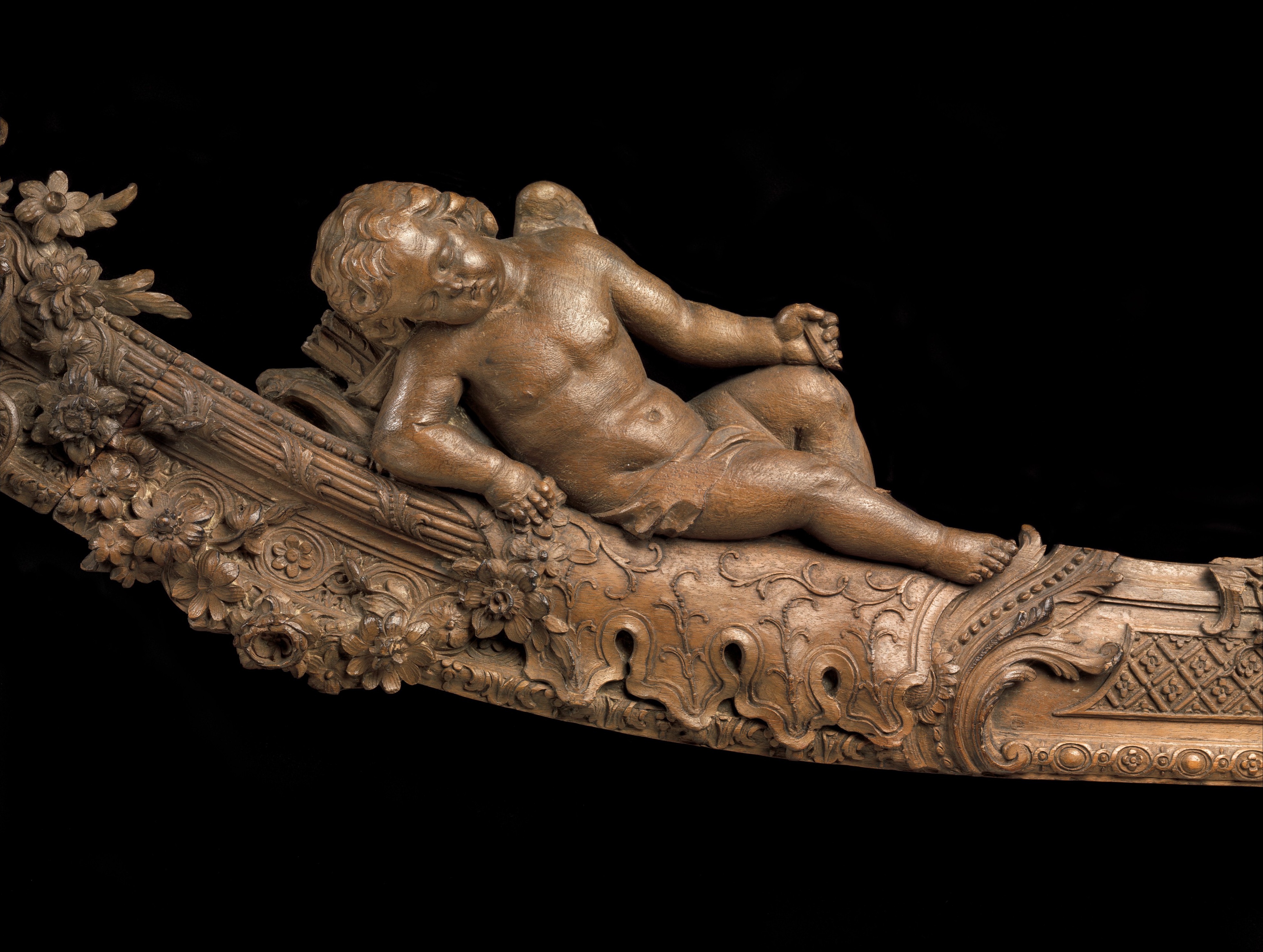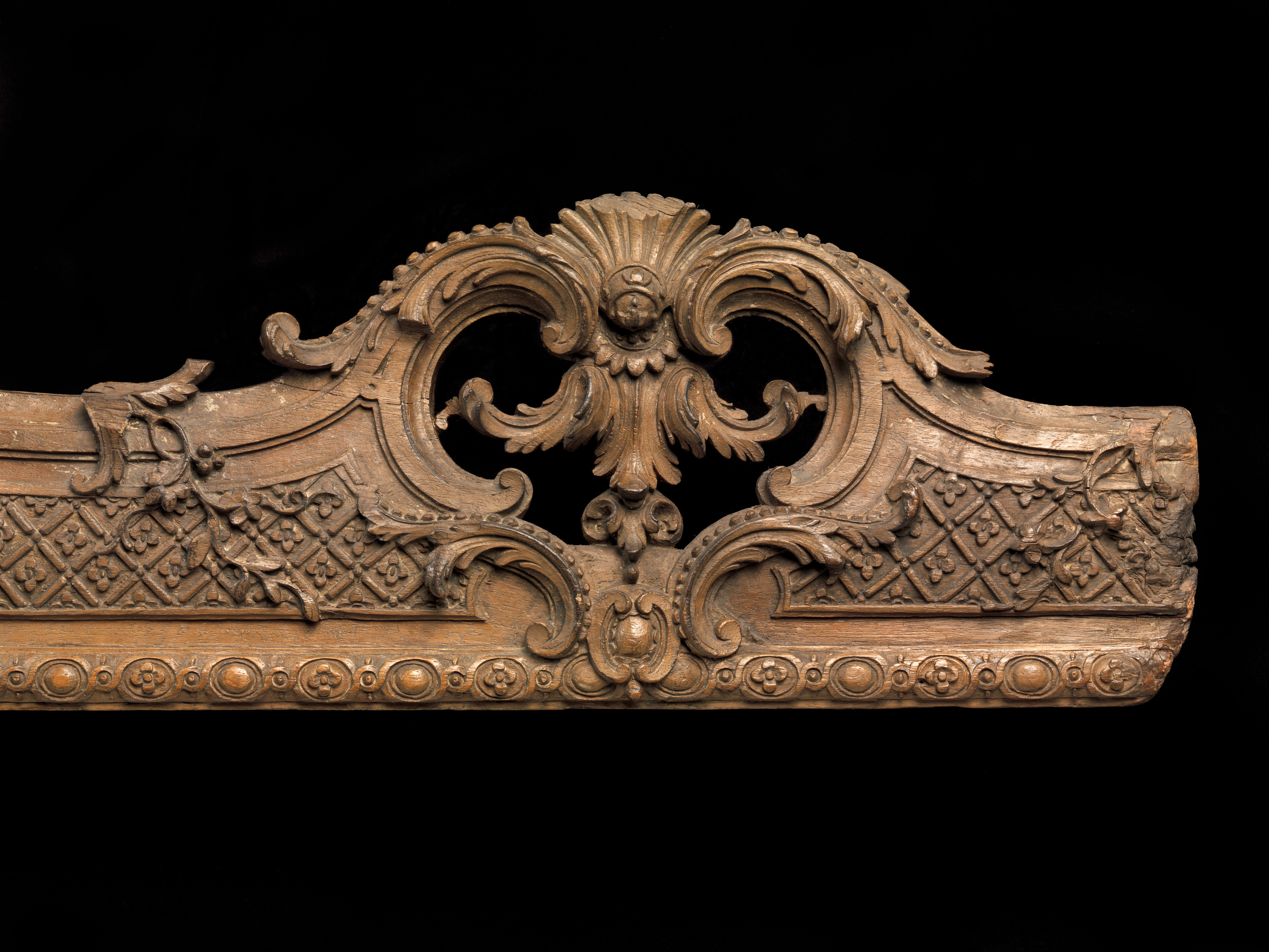Crest rail of a settee
In the manner of François Roumier French
Not on view
The crest rail with its symmetric design was executed during the early stage of the Rococo style known as Régence which encompassed the period of 1715-1723, when Philippe II, duc d’Orléans, served as regent to the young Louis XV. The Régence style was a reaction against the Baroque grandeur and formality of the court under Louis XIV and transitioned to a more frivolous and intimate sensibility developing into the full-blown Rococo with its penchant for asymmetry by circa 1730.
The carved ornament on this railing, consisting of trelliswork inscribed by rosettes, flanked by asymmetrical C and S-shaped scrolls, shells, as well as floral decoration, bears resemblance to a design by François Roumier, published in his Livre de plusieurs coins de Bordures of 1724. As a decorative carver employed by the Bâtiments du Roi, the agency in charge of the construction and maintenance of the various French royal palaces, Roumier was during the 1720s responsible for much of the carved interior decoration at the Château de Versailles.
Symbolizing love, the winged putti with their bow and quiver, are sleeping. This suggests that the settee of which this exquisitely carved crest rail was once part, was placed either in a private bedroom or in one of the more intimate smaller rooms which, with the increasing desire for comfort and privacy during the eighteenth century, became more and more important.
Due to rights restrictions, this image cannot be enlarged, viewed at full screen, or downloaded.
This artwork is meant to be viewed from right to left. Scroll left to view more.




